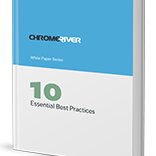
Employee expense report fraud is a considerable issue across the world – in fact in a recent survey, it was estimated to cost $2.8 billion a year in the U.S. alone, with more than 1.1 million American employees admitting to submitting deliberately falsified expenses. The impact of expense fraud goes far beyond the financial loss suffered. Organizations’ liabilities can range from audits to loss of investor confidence, and of course for those responsible for expense management and approval, failing to stop fraud can be somewhat career limiting.
In order for expense abuse and fraud to be prevented, though, organizations need to understand the range of risks to which they are exposed. Broadly speaking, these exposures fall into two categories – deliberately submitting fraudulent expenses, and manipulating or inflating legitimate expenses.
Examples of outright fraud include:
- Submitting expenses for personal items, such as gasoline or food, as business expenses.
- Submitting expenses for unused items, such as canceled airline tickets, or registration fees for conferences that the employee didn’t attend.
- Submitting receipt-less expenses just below the organization’s threshold for needing a receipt.
- Submitting a mileage report for a journey in which you were a passenger.
- Falsifying or manipulating receipts.
- Colluding with a supervisor / subordinate to cast a blind eye to false or excessive expenses.

Some of the areas that expense abuse can also take place include:
- Booking a higher class of travel (such as a limo or business class flights), when cheaper alternatives are available.
- Claiming for meals and entertainment in excess of policy amounts, or submitting items not allowed under your policy (such as alcoholic drinks and sports tickets).
- Adding tips to expenses (such as meals or taxi rides), either where they are already included in the cost, or where the amount on the expense receipt is more than what was left on the merchant receipt (such as leaving a 10% tip at a restaurant, but submitting a reimbursement claim for a 20% tip).
- Submitting higher than actual mileage totals for trips taken in personal vehicles.
There are several ways that these types of fraud and abuse can take place: lack of awareness of expense policies, collusion between approver and employee, inappropriate policing of expenses. However, with a combination of policies, awareness and technology, such as expense report software, organizations can dramatically reduce this exposure.
If you are worried about expense fraud at your organization and want to know how it can be prevented, download this free white paper – 10 Ways to Reduce Expense Fraud – which contains broad-ranging solutions for minimizing your exposure.
Subscribe
Latest Posts
Posts by Category
I just love the Chrome River application. I could probably sell it! Finance Administrative Coordinator Law Firm, 800 Employees
Can’t we just move year-end, so that we can roll out Chrome River sooner!? Financial Systems Director Law Firm, 300 Employees

Comments